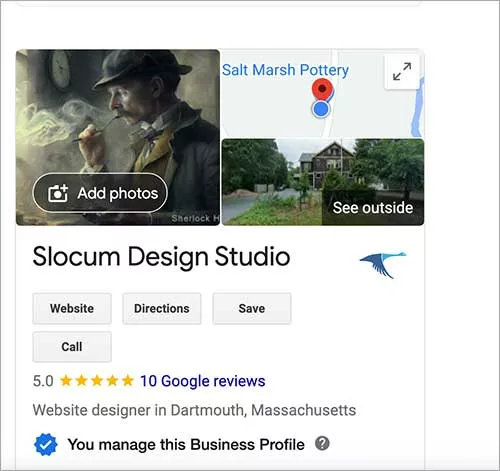Welcome, fellow website owner and aspiring traffic conductor! Are you ready to transform your online presence into a bustling hub of eager visitors? Fantastic! Buckle up and prepare to embark on an exciting journey through the ten foolproof steps to Drive Customer Traffic to your website.
From unraveling the mysteries of SEO to mastering the art of captivating content, we’ll equip you with the essential tools to attract visitors like bees to a honey-drenched pixelated flower. Let’s dive in and unleash the power of online traffic. Together, we’ll make your website the buzzing hive of activity it was destined to be!
Drive Customer Traffic to your website
Conduct Keyword Research
Step 1. Driving customer traffic to your website is essential for increasing online visibility and attracting potential customers. This blog post will explore five effective steps to get your website noticed and boost your website traffic.
You can enhance your online presence and reach a wider audience by implementing these strategies, including website optimization, SEO tips, content creation, social media marketing, and collaboration.
1. Understanding the importance of relevant keywords
Understanding the importance of relevant keywords is crucial for driving customer traffic to your website. You can optimize your content and website by conducting keyword research and identifying the terms and phrases your target audience uses. Using relevant keywords helps search engines understand your website’s relevance and can increase your visibility in search results.
2. Utilizing keyword research tools
Utilizing keyword research tools is essential to Drive Customer Traffic to your website. These tools help you discover relevant keywords, analyze search volume and competition, and uncover valuable insights. By leveraging keyword research tools, you can refine your content strategy, identify niche opportunities, and ensure your website is optimized to attract your target audience.
3. Identifying long-tail keywords for your niche
Identifying long-tail keywords specific to your niche is a powerful strategy for driving targeted customer traffic to your website. Long-tail keywords are more specific and have less competition, making it easier to rank for them. Incorporating long-tail keywords can attract highly relevant visitors actively searching for your products or services.

Are you interested in maximizing your online growth? We can help with Web Strategy, Web Design & Development, SEO, and content writing. Talk to Us! Call: (857)400-8959
Improve Your Website’s User Experience
Step 2 focuses on optimizing your website for search engines. Conducting thorough keyword research is crucial for understanding your target audience’s language when searching for products or services related to your website.
Utilize keyword research tools to identify relevant keywords and long-tail phrases that align with your niche. By incorporating these keywords strategically into your website’s content and meta tags, you can improve your search engine rankings and attract organic traffic.
1. Enhancing website navigation and structure
Enhancing website navigation and structure is essential for driving customer traffic to your website.
By ensuring intuitive menus, clear categorization, and easy-to-follow navigation, you provide a seamless browsing experience. Visitors can easily find the information they seek, leading to increased engagement, longer visits, and a higher likelihood of conversions.
2. Optimizing page loading speed
Optimizing page loading speed is crucial for attracting and retaining customer traffic. A slow-loading website can be an issue and abandonment. By optimizing images, minifying code, and leveraging caching techniques, you can significantly improve loading times.

A fast-loading website enhances user experience, encourages longer visits, and positively impacts search engine rankings for your website.
By ensuring intuitive menus, clear categorization, and easy-to-follow navigation, you provide a seamless browsing experience. Visitors can easily find the information they seek, leading to increased engagement, longer visits, and a higher likelihood of conversions. It’s these details that help Drive Customer Traffic to your website.
3. Making your website mobile-friendly
Making your website mobile-friendly is vital for attracting customer traffic in today’s mobile-driven world. With more users accessing the internet through their mobile devices, providing a responsive and user-friendly experience is crucial.
Optimizing your website for mobile screens ensures visitors can easily navigate, view content, and engage with your site, leading to higher customer satisfaction and increased traffic.
Create High-Quality and Engaging Content
Step 3. Creating high-quality and engaging content is the third step to Drive Customer Traffic to your website. Develop a content strategy that aligns with your target audience’s needs and interests. Write informative blog posts and articles that provide value and solve their problems.
Incorporate visuals, such as images, videos, and infographics, to make your content more appealing and shareable. Engaging content attracts visitors and encourages them to stay longer on your website, increasing the chances of conversions.
1. Developing a content strategy
Developing a content strategy is vital for driving customer traffic to your website. You can attract organic traffic and keep visitors engaged by carefully planning and creating relevant, high-quality content that adheres to your target audience’s interests and needs.
A well-defined content strategy ensures that your website consistently offers valuable information that appeals to your audience.
2. Writing informative blog posts and articles
Writing informative blog posts and articles is a powerful way to attract customer traffic to your website. By providing well-researched, insightful content that addresses your audience’s pain points and offers solutions, you can position yourself as an authority in your industry.
Informative content attracts readers and gets them to stay on your site longer and explore other relevant pages.
3. Incorporating visuals and multimedia elements
Incorporating visuals and multimedia elements in your website content is crucial for capturing and retaining customer traffic. Visuals such as images, infographics, and videos make your content more engaging, memorable, and shareable.

By leveraging multimedia elements, you can communicate complex concepts effectively, enhance the user experience, and encourage visitors to spend more time on your website.
Leverage Social Media and Online Marketing
Step 4. Leveraging social media and online marketing is the fourth step to increasing website traffic. Establish a strong presence on popular social media platforms relevant to your target audience.
Engage with your audience by posting content that makes sense, responding to comments and messages, and running targeted advertising campaigns.
Social media provides a powerful platform to reach a sizeable audience, drive traffic to your website, and build brand awareness.
By utilizing social media marketing effectively, you can attract potential customers and encourage them to visit your website for more information or to purchase.
1. Establishing a strong social media presence
Establishing a strong social media presence is crucial for building brand awareness and connecting with your audience. Create compelling profiles on relevant social media platforms, post engaging content regularly, and interact with your followers.
By fostering a consistent and active presence, you can build a loyal community, increase brand visibility, and drive traffic to your website.
2. Engaging with your target audience
Knowing something about and connecting with your target audience is key to building relationships, gaining insights, and fostering brand loyalty. Respond to comments, messages, and mentions promptly and authentically. This is important if you hope to Drive Customer Traffic to your website.
Encourage conversations, ask for feedback, and listen to your audience’s needs. You can strengthen relationships, increase trust, and create brand advocates by actively engaging with your audience.
3. Running targeted online advertising campaigns
Running targeted online advertising campaigns allow you to reach your desired audience more effectively. Define your target audience based on demographics, interests, and behaviors, and create compelling ads tailored to their needs.
Utilize platforms like Google Ads or social media advertising to deliver targeted messages, drive traffic to your website, and increase conversions. Monitor and optimize your campaigns to maximize their effectiveness and ROI.

Are you interested in maximizing your online growth? We can help with, SEO, Web Strategy, Design, Development, and content writing. Talk to Us! Call: (857)400-8959
Build Relationships and Collaborate
Step 5. Building relationships and collaborating with influencers and industry experts is the fifth step to driving customer traffic. Engaging with influential figures in your industry can help expand your reach and tap into your existing audience.
Consider guest blogging on relevant websites or partnering with complementary businesses for cross-promotion. Participating in online communities and forums related to your niche allows you to establish your expertise and gain visibility among potential customers.
1. Engaging with influencers and industry experts
Engaging with influencers and industry experts can significantly boost your brand’s visibility and credibility.
By reaching out and collaborating with influencers in your niche, you can tap into their established audience and gain exposure to potential customers.
By reaching out and collaborating with influencers in your niche, you can tap into their established audience and gain exposure to potential customers.

Engage in meaningful conversations, share their content, and seek opportunities for collaborations or endorsements to expand your reach.
2. Guest blogging and cross-promotion
Guest blogging and cross-promotion are effective strategies to increase online visibility and reach a bigger audience. By contributing high-quality content to relevant blogs in your industry, you can establish yourself as an authority and Drive Customer Traffic to your website.
Collaborate with complementary businesses for cross-promotion, such as featuring each other’s products or services, to expand your reach and connect to their customer base. Influencers and industry experts can significantly boost your brand’s visibility and credibility.
3. Participating in online communities and forums
Joining online communities and forums related to your niche allows you to engage with your target audience and establish your expertise. Contribute valuable insights, answer questions, and provide helpful information to build trust and credibility.
Participating in these communities can attract potential customers, generate leads, and establish your brand as a trusted resource within your industry.
Utilize Effective SEO Tips to Increase Visibility
Optimize Your Website’s On-Page Elements
Step 6. focuses on utilizing effective SEO tips to increase your website’s visibility in search engine results. Optimize your website’s on-page elements by crafting compelling meta titles and descriptions incorporating relevant keywords.
Use header tags to arrange your content and make it more understandable for users and search engines. Implementing schema markup can enhance your search engine listings with rich snippets, providing additional information to users and increasing your click-through rates.
1. Crafting compelling meta titles and descriptions
Crafting persuasive meta titles and descriptions is essential to drive customer traffic to your website.
You can attract clicks from search engine results pages by including relevant keywords, showcasing unique selling points, and enticing users with a clear call to action. Compelling meta tags improve visibility and click-through rates and drive more customer website traffic.
2. Using relevant header tags
Using relevant header tags is crucial for driving customer traffic to your website. Incorporating targeted keywords into your headers, you help search engines understand the web page content.
This improves the visibility of your website in search results and provides a better user experience by making your content more scannable and organized.
3. Implementing schema markup for rich snippets
Implementing schema markup, such as structured data, is a powerful way to enhance your website’s visibility and attract customer traffic.
By implementing schema markup, you enable search engines to display rich snippets, which provide additional information in search results.
Rich snippets can include ratings, reviews, product details, or event information, making your listing more appealing and increasing the likelihood of clicks to your website.
Generate High-Quality Backlinks
Step 7. Generating high-quality backlinks is another essential SEO strategy to improve your website’s visibility. Building relationships with authoritative websites in your industry can result in valuable backlinks.
Create valuable content that others would naturally want to link to, such as informative articles, research studies, or unique resources.
Additionally, consider submitting your website to relevant online directories to gain more exposure and increase the chances of attracting organic traffic.

Are you interested in maximizing your online growth? We can help with Web Strategy, Web Design & Development, SEO, and content writing. Talk to Us! Call: (857)400-8959
1. Building relationships with authoritative websites
Building relationships with authoritative websites is essential for off-page SEO. Connecting with reputable and influential websites in your industry can establish credibility, gain exposure to a wider audience, and potentially earn valuable backlinks.
Collaborating, guest posting, and engaging in mutually beneficial partnerships can help you build strong relationships and enhance your online presence.
2. Creating valuable content that earns backlinks
Creating valuable content is key to earning backlinks from other websites. When you produce high-quality and informative content that resonates with your target audience, other website owners and bloggers are likelier to link to it as a valuable resource.
Focus on providing unique insights, data-driven analysis, or practical tips that others will find valuable and share-worthy.
3. Submitting your website to online directories
Submitting your website to online directories can boost your visibility and improve your website’s SEO.

Look for reputable directories relevant to your industry or location and ensure that your website’s information, such as business name, address, and phone number, is accurate and consistent across these directories.
This can increase your chances of being found by potential customers and improve your local search rankings.
Monitor and Analyze Your Website’s Performance
Step 8. Monitoring and analyzing your website’s performance is crucial for ongoing optimization. Utilize tools like Google Analytics to track key metrics such as website traffic, bounce, and conversion rates. Analyze engagement metrics to gain insights into user behavior and preferences.
By understanding how visitors interact with your website, you can make data-driven decisions to improve user experience, optimize your content strategy, and enhance your overall marketing efforts.
1. Utilizing Google Analytics for valuable insights
Google Analytics provides valuable insights into your website’s performance.
You can better understand your audience and their preferences by analyzing metrics such as traffic sources, user behavior, and conversions.
Use this data to identify areas for improvement and optimize your website accordingly.
2. Tracking keyword rankings and organic traffic
Tracking keyword rankings and organic traffic is essential for effective SEO.
By monitoring your website’s keyword rankings, you can assess your visibility in search engine results and make necessary adjustments to improve your rankings.
Tracking organic traffic allows you to measure the effectiveness of your SEO efforts and identify opportunities for further optimization.
3. Making data-driven decisions for optimization
Data-driven decisions are crucial for optimizing your website’s performance.
You can make informed decisions to improve user experience, content strategy, and overall website performance by analyzing relevant data, such as user engagement, conversion rates, and bounce rates.
You can drive meaningful improvements and achieve better results by relying on data rather than assumptions.
Optimize Your Website for Local SEO
Step 9. Local SEO is crucial for businesses targeting specific geographic locations. By optimizing your website for local search, you can improve your visibility in local search engine results and attract more targeted traffic. Here are three important aspects to consider when optimizing your website for local SEO.
1. Claim and Optimize Your Google My Business Listing
Claiming and optimizing your Google My Business (GMB) listing is essential for local SEO success. Ensure that your business name, address, and phone number (NAP) information is accurate and consistent across all online platforms.

Add relevant categories, business hours, photos, and a compelling description to showcase your business. Encourage customers to leave reviews on your GMB listing, as positive reviews can improve your local search rankings.
2. Leverage Online Directories and Local Citations
Utilizing online directories and local citations is another effective way to optimize your website for local SEO. Ensure your business is listed on popular directories such as Yelp, Yellow Pages, and industry-specific directories.
Consistency in your NAP information across these directories is crucial. Additionally, consider getting listed on local business associations, chamber of commerce websites, and local news publications to boost your online visibility in the local community.
3. Encourage Customer Reviews and Testimonials
Customer reviews and testimonials play a vital role in local SEO. Positive reviews enhance your reputation and improve your search engine rankings. Try to get happy customers to leave reviews on your website, social media platforms, and relevant review websites.
Reaching out to positive or negative reviews shows your engagement and commitment to customer satisfaction.
Additionally, showcasing testimonials from happy customers on your website can provide social proof and influence potential customers in your target area.
Having your website Optimized for local SEO helps your business get discovered by people searching for products or services in your specific location. By claiming and optimizing your Google My Business listing, leveraging online directories, and encouraging customer reviews, you will improve your local search rankings and attract more targeted traffic to your website.

Are you interested in maximizing your online growth? We can help with Web Strategy, Web Design & Development, SEO, and content writing. Talk to Us! Call: (857)400-8959
Enhance Web Development and Design for User Engagement
Create a Responsive and Mobile-Friendly Website
Step 10 emphasizes enhancing web development and design to engage users effectively. Create a responsive and mobile-friendly website to cater to increasing mobile users.
Test your website’s responsiveness on different devices to ensure a seamless browsing experience across platforms. Focus on intuitive navigation and site structure by organizing content with clear menus and implementing breadcrumbs for easy navigation.

Optimize your website’s loading speed by minimizing file sizes, enabling browser caching, and utilizing content delivery networks (CDNs) for faster page loads.
1. Implementing responsive design principles
Implementing responsive design principles ensures that your website displays and functions well across different devices and screen sizes.
Using flexible layouts, fluid images, and media queries, you can create a website that adapts seamlessly to desktops, tablets, and mobile devices, providing an optimal user experience.
2. Testing website responsiveness on different devices
Testing your website’s responsiveness on other devices is essential to ensure it looks and performs as intended across various platforms.
By testing on smartphones, tablets, and different web browsers, you can identify and address any issues related to layout, navigation, or functionality. This helps guarantee a consistent and user-friendly experience for all visitors.
3. Ensuring a seamless user experience across platforms
Ensuring a seamless user experience across platforms involves optimizing your website’s performance, functionality, and design elements for different devices and platforms.
By prioritizing fast page loading speeds, intuitive navigation, and consistent branding, you create a cohesive experience that keeps users engaged, satisfied, and more likely to convert, regardless of the platform they use to access your website.
In Conclusion
In conclusion, armed with these ten effective strategies, you can steer your website toward steady customer traffic. Remember, driving traffic is an ongoing effort that requires patience, persistence, and adaptability.
If you ever need professional guidance, Slocum Studio is here to lend a helping hand. With our impressive five-star Google rating and a remarkable 90% customer retention rate after 13 years in the business, we have the expertise and experience to assist you with your web projects. So, implement these techniques and watch as your website becomes a bustling hub of engaged visitors. Happy driving!
Stay connected
We’re always hard at work putting out new content covering WordPress, marketing, and SEO news. Stay connected with us 100% spam FREE.
We hope that you enjoy our content. If you decide to make a purchase after clicking on one of our affiliate links, we’ll earn a small commission at no extra cost to you. Thanks for reading! View our Affiliate Disclosure


Great post! The emphasis on using SEO and content marketing as foundational strategies really resonates. Optimizing for search engines and consistently publishing valuable content are essential for driving organic traffic. I’m looking forward to Part Two for more actionable tips on increasing website visitors. Keep up the insightful work!